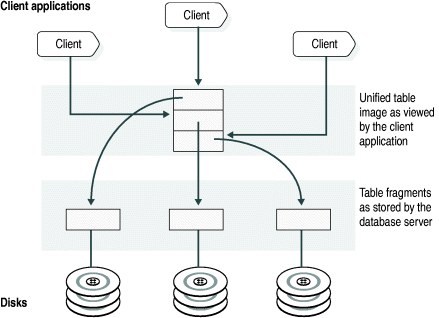
Fragmentation is a database server feature that enables you to define groups of rows or index keys within a table according to some algorithm or scheme. You can store each group or fragment in a separate dbspace that is associated with a specific physical disk. You create the fragments and assign them to dbspaces with SQL statements.
From the perspective of an end user or client application, a fragmented table is identical to a nonfragmented table. Client applications do not require any modifications to allow them to access the data that is contained in fragmented tables.
The database server stores the location of each table and index fragment, along with other related information, in the system catalog table named sysfragments. You can use this table to access information about your fragmented tables and indexes. For the complete listing of the information in this system catalog table, refer to the IBM Informix: Guide to SQL Reference.
Because the database server has information on which fragments contain which data, the database server can route client requests for data to the appropriate fragment without accessing irrelevant fragments, as Figure 73 illustrates. For more information on fragment elimination, refer to your IBM Informix: Performance Guide.

The following sections cover these fragmentation topics: